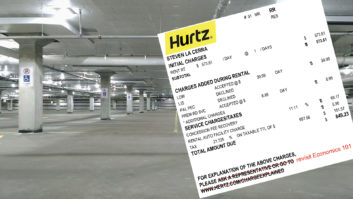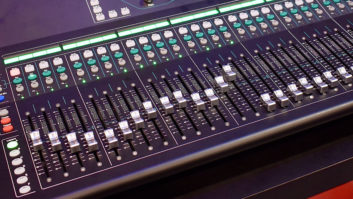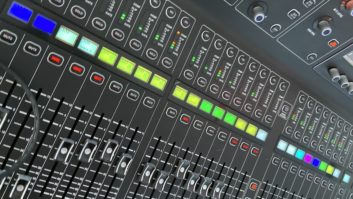One of the issues that I deal with on a constant basis is making a P.A. sound good for the front rows of a venue. It sounds contradictory, doesn’t it? But the truth is that while the first few rows of seating provide patrons with a great view, they don’t usually provide patrons with great sound.
It’s simple physics: those seats are usually too far forward to be within the field of the house P.A. system. In fact, there are some venues where the first several rows are behind the house P.A. — which means you simply ain’t gonna hear it if you’re in those seats. Vocals in particular are a problem because unlike guitars, bass and drums, they don’t produce any volume coming off the stage.
Read more Mix Blog Live: No Excuses.
In the old days, when the stage was raging with blazing loud wedge monitors, this wasn’t so much of an issue. Sound from those monitors would spill into the house, making it easy for the front rows to hear the vocals (as well as the rest of a musician’s monitor mix). Come to think of it, there were times when I could clearly hear the monitor wedges at front of house. When the sound from those speakers collided with the house P.A., the result was so special — it was a phasing nightmare. Eventually the band went to IEMs, the wedges disappeared, and so did the spill from those wedges that allowed the front rows to hear vocals. Buy a cheaper seat? Maybe (or better yet, sit next to me). Enter the front fill.
In a club or theater, a front fill, or lip-fill — small speakers placed across the front edge of the stage — is the solution. I typically route an aux send to those fills that primarily consists of vocals, thus restoring vocal balance to the money seats. At some venues I’ll add a bit of lead guitar or keys — but never bass or drums because they’re loud enough coming off the stage. Part of my soundcheck routine is to test drive the front seats. I’ll dial vocals into the front fill, go and sit in the seats while the band plays, and listen for the vocal mix. Usually after a few hundred trips back and forth I have it dialed in.
Front fill at outdoor venues is more critical because the left and right speaker hangs could easily be 60 or 70 feet apart — and the front rows once again get the short end of the stick, even if the P.A. has a very wide dispersion pattern in the horizontal field. As is the case at indoor venues, adding vocals to the front fills helps mitigate the problem.
But what about those shows where I don’t get a soundcheck? That’s a different animal, and I don’t have the chance to battle my way through 5,121 people to get to the front of the stage and hear the mix.
This bit me on the coolie tonight doing a festival show in Saskatoon, SK. The house P.A. was set up with typical output routing: left, right, subwoofers and front fills. I guess I wasn’t paying enough attention, so I loaded an existing file into the console and started the show with my usual “here’s a decent amount of vocal and not much else” in the front fill mix. It really didn’t work. Lucky for me the systems tech was in communication with someone close to the stage who relayed that people in front couldn’t hear the mix. I raised the vocals in my send to the front fill, which helped a bit. The systems tech then suggested that I back the front fill master level down about 5 or 6 dB and raise all of my front fill fader sends to unity.
That’s when the light bulb went off (or was it on?) in my fuzzy brain that had awoken 19 hours before show time. I realized that — if I followed his suggestion — I wouldn’t need to hear the front fill mix. My sends to the front fill were post-fader, so if I set the front fill sends to unity on every channel, the front fill mix would be identical to the house mix (speaker anomalies notwithstanding). Any moves I made in the house mix would be tracked by the sends to the front fill because those sends were post-fader. If I raised a guitar solo in the house it would also get louder in the front fill. Duh.
Any doubt in my mind as to what the mix sounded like in the front fill boiled down to one simple question: is it loud enough or not? I’m a lot more okay with trusting someone else’s ears to say “it’s loud enough” than I am for them to say “the guitar solos are too loud.” A minute or two later, the systems tech’s assistant came back with the message that “it’s good now.” All is well in the world.
Guess I missed the boat on this one the first time around, and it’s something I’ll use more often. That’s the beauty of working in audio: there’s always something to learn.







